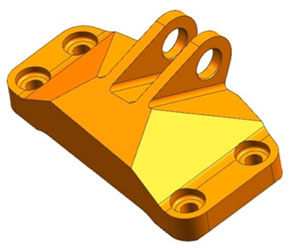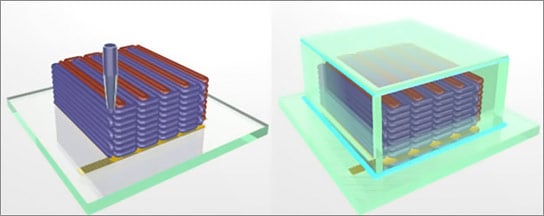Of all the Internet of Things’ revolutionary impacts on industry, perhaps none will be as dramatic as on replacement parts, where it will team with 3-D printing to reduce service time, inventory and costs.
I came to that realization circuitously, upon noticing Warren Buffett’s blockbuster purchase of Precision Castparts, the major precision parts supplier to the aeronautics industry. Having read last year about yet another breakthrough innovation by Elon Musk, i.e., the first totally 3-D printed rocket engines, I was curious to see what Precision was doing in that area. Unless my search of their website was flawed, the answer is zip, and that suggests to me that Buffett, who famously once said he doesn’t invest in technology because he doesn’t understand it, may have just bought …. a rather large dinosaur.
I noticed that one of Precision’s biggest customers is GE, which not only is using 3-D jet fuel nozzles on its engines but also ran a high-profile contest to design a 3-D printed engine mount that was open to you, me and the kids trying out the new 3-D printer at our little town’s library (note to Mr. Buffett: might be good to schedule a sit-down with Jeff Immelt before one of your biggest customers takes things in-house). As I’ve written before, not only is GE a world leader in the IoT and 3-D printing, but also in my third magic bullet, nanotech: put all three together, and you’re really talking revolution!
OK, I know 3-D printing is sloow (in its current state), so it’s unlikely to replace traditional assembly lines at places such as Precision Castparts for large volumes of parts, but that doesn’t mean it won’t rapidly replace them in the replacement parts area. I talked to a friend several years ago whose biz consists of being a broker between power plants that need replacement parts yesterday and others with an excess on hand, and couldn’t help thinking his days were numbered, because it was predicated on obsolete technology — and thinking.
Think of how the combined strengths of the IoT and 3-D printing can help a wide range of industries get replacement parts when and where they need them, and at potentially lower cost:
- sensors in IoT-enabled devices will give advance notice of issues such as metal fatigue, so that repairs can be done sooner (“predictive maintenance“), with less disruption to normal routine, cheaper and reducing the chance of catastrophic failure.
- because data can be shared on a real-time by not only your entire workforce, but also your supply chain, you can automate ordering of replacement parts.
- perhaps most important, instead of a supplier having to maintain a huge inventory of replacement parts on the possibility they may be needed, they can instead be produced only when needed, or at least with a limited inventory (such as replacing a part in inventory as one is ordered). This may lead to “re-shoring” of jobs, because you will no longer have to deal with a supplier on the other side of the globe: it might be in the next town, and the part could be delivered as soon as printed, saving both delay and money.
- your company may have your own printer, and you will simply pay the OEM for the digital file to print a part in-house, rather than having to deal with shipping, etc.
And, as I mentioned in the earlier post about GE’s leadership in this area, there are other benefits as well:
- “We’ll no longer do subtractive processes, where a rough item is progressively refined until it is usable. Instead, products will be built atom-by-atom, in additive processes where they will emerge exactly in the form they’re sold.
- “Products will increasingly be customized to the customer’s exact specifications. The products will be further fine-tuned based on a constant flow of data from the field about how customers actually use them.”
Sooo, Mr. Buffett, it’s time that you come to terms with 21-st century technology or Berkshire Hathaway’s financial slide may continue.


